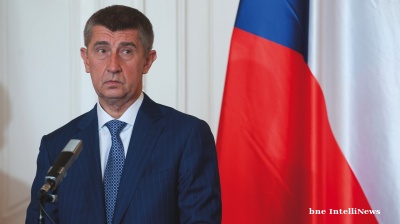VIENNEAST COMPASS: How many straws to break a camel’s back? How do illiberal economies attract so much FDI

On October 13, on either side of the Tatras mountains, Central Europe’s “illiberal democrats” faced their latest litmus tests.
In Poland, voters decided whether to support the Law and Justice Party (PiS) and give it a second term in government, following a politically turbulent four years in which it embarked on an ambitious project to remould the country, its legal system, its media landscape, its political economy and, above all, its society.
In Hungary, where Viktor Orban’s Fidesz party has conducted constitutional reconstruction works for nearly a decade, local elections were held.
These were bitterly fought contests. Islands of liberalism emerged across Hungary, with 10 of its 23 major cities rejecting Fidesz, including Budapest, which “did an Istanbul,” and handed the mayors office to the opposition. Yet in Poland, PiS succeeded in retaining its historic absolute majority in parliament’s lower chamber, in addition to increasing its share of the vote to a record level. Varied though the results were, there is little doubt that Fidesz and PiS will retain overall control of their respective countries.
Brave new world
Foreign investors will have to accommodate the populist nationalism and statist illiberalism for at least another half-decade, if not longer. Memories of these erstwhile disciples of liberal democracy and free market capitalism are fading fast. The blue-eyed students of post-socialism have long since become problem children of neo-capitalism.
Both countries have championed the development of domestic capital, favouring certain companies. Special taxes, unilateral contract conversions and re-nationalisation of sectors have been imposed at the expense of certain foreign multinationals in particular sectors. Checks and balances have been weakened through systematic increases in the influence of the executive over the courts and regulators. The media environment has been distorted by creeping regulatory action and buyouts by pro-government businesspeople.
Indeed, institutional quality in both countries has demonstrably deteriorated. The World Bank’s World Governance Indicators from 2017 show that since 2010 both Hungary (fig. 1.1) and Poland (fig. 1.2) have generally declining or flatlining results in several key categories, notably control of corruption, regulatory quality, rule of law and voice and accountability.

Figure 1.1 - Hungary World Governance Indicators – Source: World Bank (2017)

Figure 1.2 – Poland World Governance Indicators – Source: World Bank (2017)
Based on these trends, Hungary and Poland are turning their backs on the very assumptions that informed their transition to the prevailing Western political economic model. A textbook case of these assumptions was provided by the OECD in a key study from 2000, which argued that institutional reform, fiscal consolidation and market liberalisation are the pillars of a competition policy that can attract foreign direct investment (FDI). Establishing good governance would provide foreign investors with the peace of mind to plan ahead, even if the electoral cycle ejected a curveball.
With the logic of these conclusions, developments in Hungary and Poland should have resulted in a significant decline in FDI. Yet this has not occurred to any great extent. Both countries perform strongly in the Central, East and South Eastern Europe (CESEE) region in terms of FDI inflows and FDI inward stock as a percentage of GDP and per capita.
Hungary, despite having gone far further than Poland with respect to its illiberal restructuring, remains a darling of foreign investors. And although the FDI performance of Poland lags behind some of its regional peers, this is the result of policy decisions already made prior to the election of PiS in 2015 – by governments deemed to be ‘liberal’. Elsewhere, Serbia – a state whose already low institutional quality has also declined – has even increased in appeal for foreign investors.

Figure 2.1 – Source: The Vienna Institute for International Economic Studies (wiiw)

Figure 2.2 – Source: wiiw

Figure 2.3 – Source: wiiw
Clearly, the decline in governance ratings and increase in populism has not lessened investor appetites, as Hungary and Poland remain prime destinations for FDI. There are three reasons as to why this might be the case.
Jekyll and Hyde: The policy flipside
Although Hungary and Poland have targeted foreign capital in recent years, the initial discomfort is largely over. Structurally, both countries continue to roll out the proverbial red carpet for foreign investors.
Hungary maintains an average effective corporate tax rate of 5%, the lowest level in the EU. Between 2010-2018, it doubled its financial support for foreign multinationals to €1bn, which similarly receive 66% of Hungary’s EU Cohesion Policy funding, the highest proportion in the EU. Hungary’s labour market has also been radically liberalised. Fidesz has nearly doubled allowable overtime hours, decentralised collective bargaining, reduced the social security burden on employers, and eased the process by which employers can dismiss workers.
Favoured companies, including foreign investors, can maintain a privileged relationship with the state through “strategic partnerships.” A system of tax-deductible donations to sports foundations – football is the burning passion of the Fidesz community – also allows for political protection to be bought.
PiS has also introduced generous incentives for FDI even while it has spoken of the “re-Polanisation” of certain sectors. The Special Economic Zone (SEZ), which offers corporate and personal income tax relief for new investments, was expanded from a regional to a nationwide basis. Companies may deduct up to 50% of investment costs from their corporate tax bill for projects that last at least five years. The Innovation Box scheme conditionally lowers tax on intellectual property to 5%, the lowest level in the developed world. Investors in underdeveloped regions are exempted from property tax.
More generally, both countries occupy geographically strategic locations in the Central European supply chain. Poland, in particular, will deepen its infrastructural connectivity with several major projects, such as the Central Communication Port (CPK), which will serve the aviation and railway sectors. Hard indicators such as these, factor into the long-term planning of foreign investors more than populist rhetoric and the creeping politicisation of independent institutions.
The straitjacket: EU membership
The membership of both Hungary and Poland of the EU acts as a major safeguard. Even where institutional deterioration has occurred, the EU has an increasing number of instruments to prevent a full descent into authoritarianism.
The European Commission has flexed its muscles, albeit hesitantly and slowly, with proceedings to trigger Article 7, which could result in the suspension of certain membership rights. The EU budget for 2021-2027 is likely to couple development funding with respect for the rule of law. The newly established European Public Prosecutor’s Office (EPPO) will target nepotism and corruption.
There are other mitigating factors. Hungary and Poland are among the largest beneficiaries of EU structural and investment funding, having received €29bn (3% of GDP) and €105bn (2% of GDP), respectively, between 2014-2020. These funds – which benefit state-favoured companies – are not easily raised from elsewhere. Membership of the single market prevents by its very nature the kind of policies that would really cause investor flight, such as restrictions on the repatriation of profits by foreign companies, while being part of the EU “regulatory union” ensures commonality. Foreign exchange policy is coordinated with the Eurozone and European Central Bank, preventing politically catalysed currency valuations similar to those seen in Turkey.
Indeed, Hungary and Poland are so intertwined with the Central European supply chain and the FDI that brings, that it is only politically logical to push the limits of the rules, rather than to break them outright. Material realities win the day: the moody teenagers know on which side their bread is buttered – they may be rebellious but leaving home is not an option.
Fair winds: The economic cycle
Despite the institutional decline in Hungary and Poland, the Fidesz and PiS governments have enjoyed an economic upswing. The global economic cycle has peaked and is slowing but has not crashed, cruising at a growth rate of 3.6% of GDP in 2018, while aggregate growth in the EU was 2%. Hungary and Poland perform above these averages, with both posting growth rates of 5%.
These rates are not synthetic, nor generated solely by EU funds and hot money: they are spread across all sectors of both economies, indicating that the macroeconomic fundamentals are robust.
Other key indicators bear this out: budget balance, current account balance and household debt levels, for example, are all within sustainable limits. In such circumstances, foreign investors are prepared to tolerate higher levels of risk, including political. Yet the cycle is perpetuated by investor confidence, and should this disappear, it might not return in the same volume.
A delicate balancing act
Hungary and Poland are unique case studies in that their respective political economies cannot be placed in the same category as the usual suspects of the “new authoritarian” world. Institutional decline has occurred, but it has been creeping, mostly remaining just within permissible limits. Risks remain low compared to the 1990s, when the pillars of good governance and the market economy were very much works in progress. There is a far higher degree of institutional predictability for foreign investors in both countries than in much of the rest of CESEE, including Romania, Bulgaria, Croatia, the Western Balkans, Ukraine and Turkey.
Hungary and Poland also demonstrate the importance of micro political risks in determining FDI patterns. Investors are not a passive, unified collective, but a disparate mass of proactive actors with varying interests; they can form strategies to mitigate risks and seize the opportunities that arise out of them. Risk is a rocky landscape to be navigated rather than a storm to be endured. Hungary and Poland continue to offer a wide range of instruments and benefits to this end.
Foreign multinationals and state-favoured actors are thus able to coexist alongside each other, or even enter into mutually beneficial agreements – cynical though they may be. Institutional risks need not matter if a foreign investor sees an opportunity and has conducted the necessary hedging and adopted appropriate risk management strategies.
These considerations highlight how many factors would need to combine to create the kind of perfect storm capable of prompting mass disinvestment from Hungary and Poland, such as that experienced by Turkey. More likely, given the uncertain direction of the EU – what will it look like in 10 years? The question for both countries will be a long-term one and one that does not just involve a calculation at the single country level.
Marcus How is the Head of Research & Analysis at ViennEast Consulting GmbH
Opinion

COMMENT: Hungary’s investment slump shows signs of bottoming, but EU tensions still cast a long shadow
Hungary’s economy has fallen behind its Central European peers in recent years, and the root of this underperformance lies in a sharp and protracted collapse in investment. But a possible change of government next year could change things.

IMF: Global economic outlook shows modest change amid policy shifts and complex forces
Dialing down uncertainty, reducing vulnerabilities, and investing in innovation can help deliver durable economic gains.

COMMENT: China’s new export controls are narrower than first appears
A closer inspection suggests that the scope of China’s new controls on rare earths is narrower than many had initially feared. But they still give officials plenty of leverage over global supply chains, according to Capital Economics.

BEYOND THE BOSPORUS: Consumed by the Donald Trump Gaza Show? You’d do well to remember the Erdogan Episode
Nature of Turkey-US relations has become transparent under an American president who doesn’t deign to care what people think.


